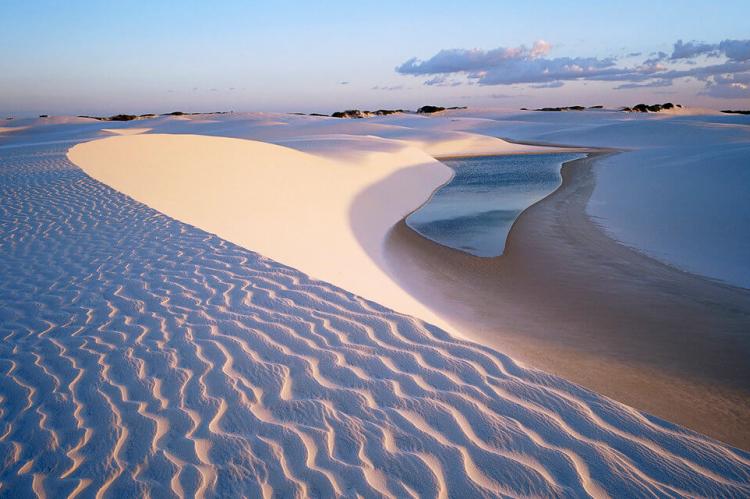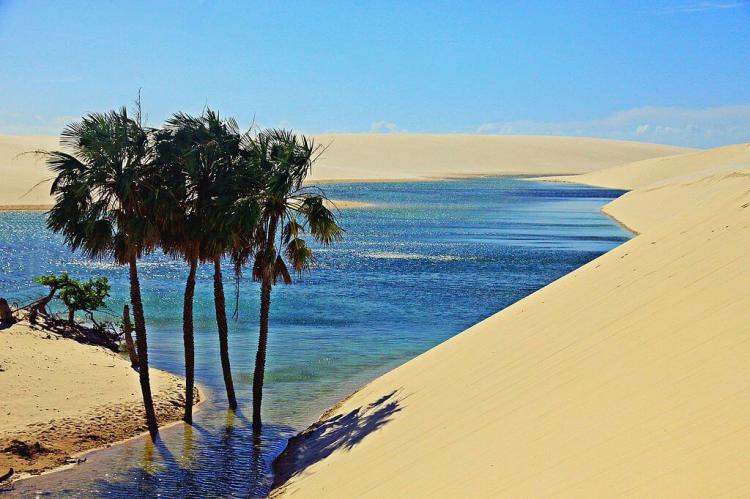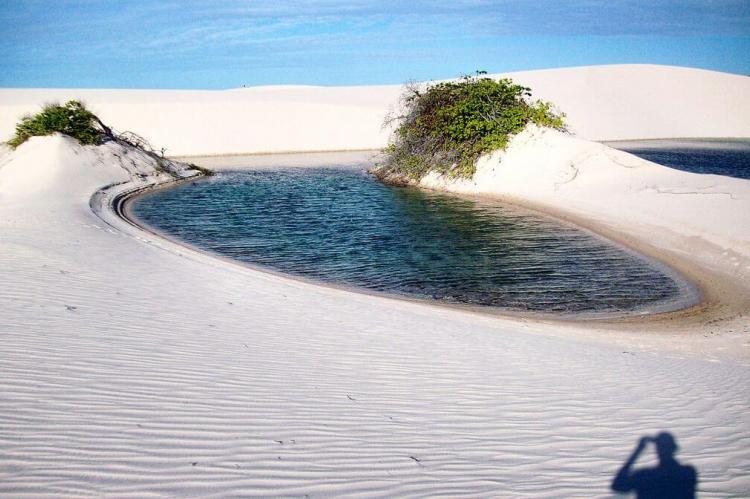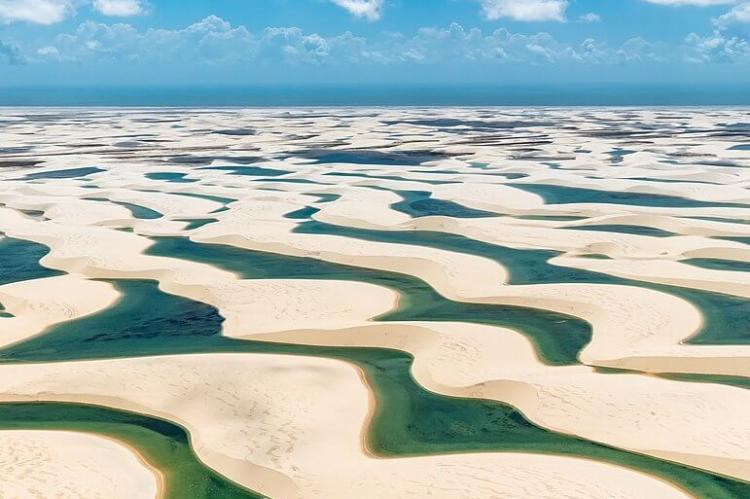Journey Through the Dunes: Lençóis Maranhenses National Park
Located within the northeastern region of Brazil, Lençóis Maranhenses National Park is an example of nature's artistry and resilience. This protected area, extending across a vast expanse, encompasses diverse landscapes, including windswept dunes, seasonal lagoons, and verdant oases.
Journey Through the Dunes: Lençóis Maranhenses National Park
Located within the northeastern region of Brazil, Lençóis Maranhenses National Park presents a captivating example of nature's artistry and resilience. Extending across a vast expanse in Maranhão state, this protected area encompasses a diverse range of landscapes, including windswept dunes, seasonal lagoons, and verdant oases. Exploring the mysteries of this unique ecosystem involves delving into its dynamic terrain and rich biodiversity.
Dynamic Dunes
At first glance, Lençóis Maranhenses National Park may appear to be a desert landscape, with its vast dunes stretching as far as the eye can see—the park's distinctive topography results from a delicate interplay between wind, water, and time. The sand, carried from the continent's interior by the Parnaíba and Preguiças rivers, is shaped into towering dunes reaching up to 40 meters (130 feet) by relentless coastal winds. These shifting sands create an ever-changing landscape that captivates the imagination of all who venture into its embrace.
Seasonal Lagoons
Despite its desert-like appearance, Lençóis Maranhenses receives a surprising amount of rainfall, averaging around 1,200 millimeters (47 inches) annually. During the rainy season, from January to June, torrential downpours transform the arid landscape into a vibrant mosaic of freshwater lagoons. These temporary pools, fed by the seasonal rains, dot the terrain, filling the spaces between the dunes with crystal-clear waters. Spanning up to 100 meters (330 feet) in length and 3 meters (10 feet) in depth, these lagoons provide a vital lifeline for the park's diverse flora and fauna.
Oases of Life
Within the park's interior lie two oases or restingas: Queimada do Britos and Baixa Grande. These verdant vegetation patches cover 1,100 hectares (2,700 acres) and 850 hectares (2,100 acres), respectively, providing crucial habitats for various plant and animal species. Amidst the towering dunes and arid landscapes, these oases serve as havens of life, supporting a rich diversity of flora and fauna.
Rich Biodiversity
Lençóis Maranhenses National Park is a biodiversity hotspot, teeming with life adapted to its unique habitats. The park is home to an impressive array of species, including 133 species of plants, 112 species of birds, and at least 42 species of reptiles. Among its inhabitants are four species listed as endangered, including the scarlet ibis, neotropical otter, oncilla, and West Indian manatee. The park's freshwater lagoons and interconnected ecosystems provide essential habitat for these species, ensuring their survival in this dynamic environment.
Conclusion
Lençóis Maranhenses National Park is a beacon of Brazil's natural heritage and ecological diversity. From its shifting dunes to its seasonal lagoons and vibrant oases, the park provides insight into nature's resilience amidst ever-changing landscapes. As efforts to explore and appreciate the wonders of Lençóis Maranhenses persist, it is crucial to maintain a steadfast commitment to its preservation, ensuring that this unique ecosystem remains protected for generations to come.

![Dunes and lagoons of Lençóis Maranhenses National Park in Brazil - Heris Luiz Cordeiro Rocha [CC BY-SA 3.0 (https://creativecommons.org/licenses/by-sa/3.0)] Dunes and lagoons of Lençóis Maranhenses National Park in Brazil](/sites/default/files/styles/large/public/lencois_maranhenses_national_park_brazil_2_opt%20%281%29.jpg?itok=ujr4dQsY)
![Lençóis Maranhenses National Park, Brazil - Rosanetur from Rio de Janeiro, Brazil [CC BY 2.0 (https://creativecommons.org/licenses/by/2.0)] Lençóis Maranhenses National Park, Brazil](/sites/default/files/styles/large/public/lencois_maranhenses_national_park_brazil_3_opt%20%281%29.jpg?itok=v7KUQTtS)

![Aerial view of Lençóis Maranhenses National Park, Brazil - Cristiano Quintino [CC BY-SA 3.0 (https://creativecommons.org/licenses/by-sa/3.0)] Aerial view of Lençóis Maranhenses National Park, Brazil](/sites/default/files/styles/large/public/lencois_maranhenses_national_park_brazil_5_opt%20%281%29.jpg?itok=5nCxS7k_)
![Lençóis Maranhenses National Park, Brazil - Artur Warchavchik [CC BY-SA 3.0 (https://creativecommons.org/licenses/by-sa/3.0)] Lençóis Maranhenses National Park, Brazil](/sites/default/files/styles/large/public/lencois_maranhenses_national_park_brazil_6_opt%20%281%29.jpg?itok=MAVjmiO7)
![Lençóis Maranhenses National Park, Brazil - Vitor 1234 [CC BY-SA 3.0 (https://creativecommons.org/licenses/by-sa/3.0)] Lençóis Maranhenses National Park, Brazil](/sites/default/files/styles/large/public/lencois_maranhenses_national_park_brazil_7_opt%20%281%29.jpg?itok=KriTPkw1)

